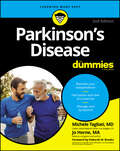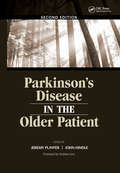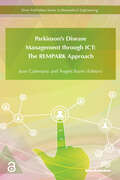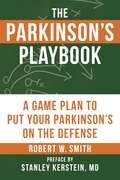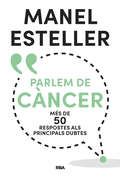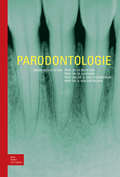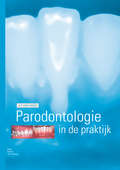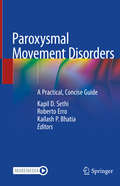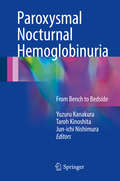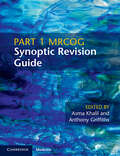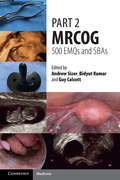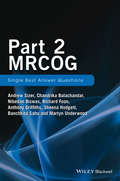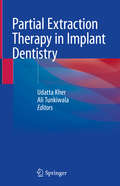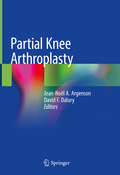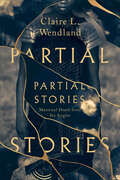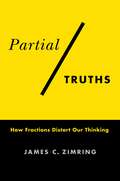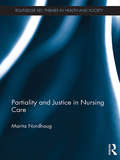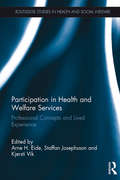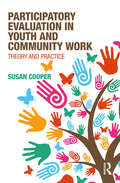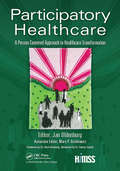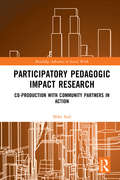- Table View
- List View
Parkinson's Disease For Dummies
by Jo Horne Michele TagliatiMaintain a take-charge attitude and live your life to the fullest with Parkinson's Whether the diagnosis is yours or that of a loved one, Parkinson's Disease for Dummies contains everything you need to know about living with this disease. This book is an easy-to-understand, straightforward, and sometimes humorous guide that offers proven techniques for coping with daily issues, finding the right doctors, and providing care as the disease progresses. This user-friendly guide helps you navigate you through the important steps toward taking charge of your condition. You aren't alone—inside, you'll discover proven coping skills and first-hand advice, along with practical tools that will help you navigate the treatment journey. In classic, compassionate Dummies style, Parkinson's Disease For Dummies will answer all your questions, and guide you through the process of finding your own answers as well. Keep your mind sharp, stay in shape, and keep your stress under control Life a full and satisfying life after a Parkinson's diagnosis Get the most current information on Parkinson's medications and treatments Learn the best ways to support loved ones living with Parkinson's With updates on the latest in alternative treatments, dementia, and young onset PD, Parkinson's Disease for Dummies is here to show you how you can keep a positive attitude and lead an active, productive life.
Parkinson's Disease in the Older Patient
by Dr Jeremy R Playfer John Hindle"Parkinson's Disease in the Older Patient, Second Edition" has been fully revised, updated and expanded to include new treatments and entirely new chapters. This authoritative text is written by recognised national specialists in the field and provides accessible, easy-to-read information. The practical and versatile approach comprehensively covers all aspects of treatment, and although it focuses on the older patient, it is also highly relevant for younger patient groups with an emphasis on multidisciplinary assessment and management. Detailed information on the aetiology and pathogenesis of the condition, drug and surgical treatments, sleep disturbances, quality of life and careers is now included, along with the more prevalent older patient issues such as neuropsychiatric disturbances, speech and swallowing problems, balance and falls, and autonomic disturbances. The updates also include new advice on the management and services in primary care, linked to the recent NICE guidelines.With official endorsement from The Parkinson's Disease Academy of the British Geriatrics Society, this new edition is highly recommended for general practitioners, geriatricians, neurologists and psychiatrists. Physiotherapists, occupational therapists, speech therapists, dieticians, and psychologists will also find it invaluable. It is suitable for general and specialist nurses, and will be of great use to researchers with an interest in Parkinson's disease.
Parkinson's Disease Management through ICT: The REMPARK Approach (River Publishers Series In Biomedical Engineering Is A Series Of Comprehensive Academic And Professional Books Which Focus On The Engineering And Mathematics In Medicine And Biology. The Series Presents Innovative Experimental Science And Technological Development In The Biomedical Field As Well As Clinical Application Of New Developments. Books Published In The Series Include Research Monographs,)
by Joan Cabestany Àngels BayésParkinson's Disease (PD) is a neurodegenerative disorder that manifests with motor and non-motor symptoms. PD treatment is symptomatic and tries to alleviate the associated symptoms through an adjustment of the medication. As the disease is evolving and this evolution is patient specific, it could be very difficult to properly manage the disease.The current available technology (electronics, communication, computing, etc.), correctly combined with wearables, can be of great use for obtaining and processing useful information for both clinicians and patients allowing them to become actively involved in their condition.Parkinson's Disease Management through ICT: The REMPARK Approach presents the work done, main results and conclusions of the REMPARK project (2011 – 2015) funded by the European Union under contract FP7-ICT-2011-7-287677. REMPARK system was proposed and developed as a real Personal Health Device for the Remote and Autonomous Management of Parkinson’s Disease, composed of different levels of interaction with the patient, clinician and carers, and integrating a set of interconnected sub-systems: sensor, auditory cueing, Smartphone and server. The sensor subsystem, using embedded algorithmics, is able to detect the motor symptoms associated with PD in real time. This information, sent through the Smartphone to the REMPARK server, is used for an efficient management of the disease.
The Parkinson's Playbook: A Game Plan to Put Your Parkinson's On the Defense
by Stanley Kerstein Robert SmithThe Parkinson’s Playbook puts the power in your hands, giving you the knowledge you need to proactively defend yourself against the progression of Parkinson’s disease with energy, vitality, and confidence.The diagnosis of Parkinson’s disease is not an easy one. In The Parkinson’s Playbook, author Robert Smith has prepared an enlightening and engaging “playbook” to help you tackle Parkinson’s head on, including a pro-active offense of lifestyle improvements and defensive measures including cutting-edge medications and natural healing techniques.The Parkinson’s Playbook makes you the MVP of your life—so get out there and win!Also featured in The Parkinson’s Playbook:• How to assemble a line-up of medical and emotional support systems• Learn the importance of exercise to boost strength and relieve stress• Effective, easy-to-implement diet changes for well-being...and so much more, all with the unique patient’s perspective of the author’s personal experiences fighting—and winning—against his disease.
Parlem de càncer: Més de 50 respostes als principals dubtes
by Manel EstellerL'autor de No sóc el meu ADN desemmascara les faules i els falsos mites sobre la malaltia més comuna del nostre temps: el càncer. Autoritat mundial en la matèria, Manel Esteller, ens explica que la millor manera de fer front al càncer és conèixer-lo i desemmascara tots els mites que hi ha entorn seu a la vegada que revela, amb una prosa senzilla i clara, tots els dubtes sobre aquesta malaltia. El càncer es pot contagiar? El meu estil de vida o el lloc on treballo poden influir perquè arribi a tenir càncer? Manel Esteller respon aquestes i moltes altres preguntes en aquest llibre clau per conèixer i entendre els mecanismes d'aquesta malaltia. «Aquest és un llibre sobre tu. I sobre mi. I sobre les nostres famílies i els nostres amics. I sobre el desconegut amb qui ens creuem al carrer. Perquè tots emmalaltim i un nombre gens menyspreable de nosaltres tindrem càncer. I llavors ens assaltaran preguntes i dubtes. En aquest llibre trobaràs les respostes i les esperances que ens dona la ciència més rigorosa. Fem-nos preguntes i contestem-les sense por»Dr. Manel Esteller
Parodontologie
by W. Beertsen M. Quirynen D. Steenberghe U. VeldenVeel voorkomende gebitsproblemen vinden hun oorsprong in ziekten van de tandomgevende weefsels, het kaakbot en de orale mucosa. In Parodontologie is de meest actuele wetenschappelijke informatie op dit gebied samengebracht, met focus op de etiologie, de pathogenese en de behandeling van parodontale ontstekingen en de betekenis van deze aandoeningen voor mond- en algemene gezondheid. Dit leerboek onderscheidt zich van andere uitgaven over parodontologie doordat de auteurs de wetenschappelijke informatie zo vertalen dat nieuw verworven kennis direct in de klinische praktijk kan worden toegepast. Daarbij laten de internationaal erkende auteurs ruimte voor discussie, indien over bepaalde zaken consensus ontbreekt. Het boek geeft een compleet overzicht van parodontologische aandoeningen door niet alleen plaque-gerelateerde maar ook de niet-plaquegerelateerde problemen te bespreken. Daarnaast wordt aandacht besteed aan orale implantaten en hun omgevende weefsels.
Parodontologie in de Praktijk
by J. P. HoeveEen gezond parodontium is het fundament voor succesvolle restauratieve tandheelkunde. Zo ontstond bij de auteur, Jan van Hoeve - zelf tandarts - de belangstelling voor parodontologie. Om het resultaat van zijn handelen op langere termijn te kunnen beoordelen, heeft hij vanaf het begin van zijn praktijk in 1970 zo veel mogelijk patiënten klinisch, röntgenologisch en fotografisch gedocumenteerd.De casuïstiek en de evaluaties die zodoende ontstonden zijn door Van Hoeve beschreven in meer dan vijftig bijdragen, die in het tijdschrift Tandartspraktijk zijn gepubliceerd. In dit boek is een ruime selectie van deze bijdragen bijeengebracht.Deze uitgave is bedoeld voor tandartsen en mondhygiënisten en bestaat uit vier onderdelen: Deel 1 -Algemene onderwerpenDeel 2 -Artikelen over behandelingsplanning en behandelingDeel 3 -CasuïstiekDeel 4 -Bijdragen over regeneratie en de relatie tussen parodontologie enRestauratieve tandheelkunde: Door zijn visie en bevindingen te delen met andere tandartsen hoopt de auteur bij te dragen aan het optimaal behandelen van patiënten en tevens het langetermijneffect van behandeling te vergroten.
The Paroxysmal Disorders
by Bettina Schmitz Barbara Tettenborn Donald L. SchomerThe paroxysmal disorders present neurologists and other medical professionals with diagnostic problems across a range of disorders, including multiple sclerosis, migraine and epilepsy. This new English language edition of a compendium of the paroxysmal disorders, originally published in German as Paroxysmale Störugen in der Neurologie, is an informative and practical resource for clinicians, which provides invaluable help with differential diagnosis and management. Fully updated throughout, this new edition comprehensively covers the entire spectrum of the paroxysmal disorders, including sudden falls, headache, vertigo attacks, memory loss, visual disturbances, seizures and anxiety. Each chapter is practice oriented, covering definitions, etiology, epidemiology, diagnosis, examination techniques and therapy. Detailed guidelines for gathering case-histories, essential for accurate diagnosis, are also provided. Important reading for clinicians, professionals and academic researchers working in neurology, psychiatry, epilepsy, internal medicine and ENT.
Paroxysmal Movement Disorders: A Practical, Concise Guide
by Kapil D. Sethi Roberto Erro Kailash P. BhatiaThis book addresses the challenges in the differential diagnosis and management of paroxysmal movement disorders. It provides the latest information on the genetics and pathophysiology, neurophysiology and neuroimaging of the core group of disorders in the field, namely the paroxysmal dyskinesias (PxD).Focused and concise, this guide features chapters that discuss other conditions that may be paroxysmal such as, episodic ataxia, startle syndromes and other more complicated groups of paroxysmal movement disorders such as ATP1A3 spectrum disorders. A chapter on secondary (acquired) paroxysmal dyskinesia highlights medical and other disorders that may result in paroxysmal dyskinesia. The book features a particularly nuanced chapter that discusses recent discoveries in the genetic aspects of PxD, relaying that paroxysmal dyskinesias are not channelpathies, but in fact are synaptophies and transportopathies. Additionally, expertly written chapters are supplemented by high quality images, tables, and videos. Paroxysmal Movement Disorders: A Practical Guide is primarily written to educate the reader on how to make a syndromic diagnosis of paroxysmal movement disorders and how to build the diagnostic work-up accordingly, as well as how to manage patients with paroxysmal movement disorders.
Paroxysmal Nocturnal Hemoglobinuria
by Yuzuru Kanakura Taroh Kinoshita Jun-Ichi NishimuraParoxysmal Nocturnal Hemoglobinuria: From Bench to Bedside, reviews the fundamental understanding of this potentially life-threatening disease and the advances in treatment that have been achieved with the use of the monoclonal antibody, eculizumab. But while the PIGA gene has been identified for many years, the mechanism of clonal dominance in paroxysmal nocturnal hemoglobinuria is still largely unknown. This book discusses the direction of continuing research in this area, as well as the potential for the development of management guidelines. It serves as a valuable source of information for both basic scientists and physicians, especially immunologists targeting GPI-anchored proteins and complements, and hematologists specializing in bone marrow failure.
PARP Inhibitors for Cancer Therapy
by Nicola J. Curtin Ricky A. SharmaPARP Inhibitors for Cancer Therapy provides a comprehensive overview of the role of PARP in cancer therapy. The volume covers the history of the discovery of PARP (poly ADP ribose polymerase) and its role in DNA repair. In addition, a description of discovery of the PARP family, and other DNA maintenance-associated PARPs will also be discussed. The volume also features a section on accessible chemistry behind the development of inhibitors. PARP inhibitors are a group of pharmacological inhibitors that are a particularly good target for cancer therapy. PARP plays a pivotal role in DNA repair and may contribute to the therapeutic resistance to DNA damaging agents used to treat cancer. Researchers have learned a tremendous amount about the biology of PARP and how tumour-specific defects in DNA repair can be exploited by PARPi. The "synthetic lethality" of PARPi is an exciting concept for cancer therapy and has led to a heightened activity in this area.
Part 1 MRCOG Synoptic Revision Guide
by Asma Khalil Anthony GriffithsConfidently tackle the MRCOG Part 1 exam with this comprehensively updated revision guide, reflecting the latest changes to the curriculum and question format. Edited by experienced examiners and written by course lecturers, the full syllabus is summarised using their extensive knowledge of the exam. Topics covered include the anatomy of the pelvic area, data interpretation in gynaecology and obstetrics, and the pathology of neoplastic and non-neoplastic diseases amongst others. Collections of single best answer (SBA) questions for several topics provide an invaluable opportunity for readers to test their retention of knowledge and practice for the exam. Bullet point formatting is used, enabling readers to absorb key information quickly. Over 200 illustrations aid understanding and engage the reader in the material being discussed, leading to a deeper appreciation of the topic. This is an indispensable revision guide for all MRCOG Part 1 candidates.
Part 2 MRCOG: 500 EMQs and SBAs
by Andrew Sizer Bidyut Kumar Guy CalcottThe more you practice, the better you get. Written by an experienced team of Member, Royal College of Obstetricians and Gynaecologists (MRCOG) question setters, this book contains 500 practice single best answer questions (SBAs) and extended matching questions (EMQs) for candidates undertaking the Part 2 MRCOG examination. It includes detailed explanations and key references to enable candidates to understand the reasoning and knowledge base behind the questions. All modules of the core curriculum are included, and detailed further sources are recommended for the inquisitive learner. The candidate can test their knowledge across the breadth of modules and identify areas for improvement and further revision. Following the 2015 format change to include SBAs, this book equips candidates with a full range of testing to develop familiarity with the format and prepare for high examination standards. Up to date, comprehensive and written by highly experienced examiners, this is a crucial resource for all Part 2 MRCOG candidates.
Part 2 MRCOG: Single Best Answer Questions
by Andrew Sizer Chandrika Balachandar Nibedan Biswas Richard Foon Anthony Griffiths Sheena Hodgett Banchhita Sahu Martyn UnderwoodPart 2 MRCOG: SBA Questions contains invaluable preparation and practice for candidates undertaking the Royal College of Obstetricians and Gynaecologists Part 2 MRCOG examination. It contains 400 practice questions written by a highly experienced team of MRCOG question writers, alongside detailed answers referencing each question to either an RCOG, NICE or WHO guideline, or an article in the professional journal ‘The Obstetrician & Gynaecologist’. This will enable candidates to understand the reasoning and knowledge base behind the question, as well as giving them a clear reference should they wish to read further around the subject. The first part of the book introduces and explains the new format of the Part 2 MRCOG exam, giving insightful advice on the skills required to write a good SBA question. The second part of the book contains chapters matched to the 15 of the 19 modules of the core curriculum, giving a comprehensive range of questions and answers with detailed explanations and references. For anyone preparing for the Part 2 MRCOG exam, this book will provide extensive and comprehensive practice and guidance from an expert author team.
Part 3 MRCOG
by Lisa Joels Edmund NealeWritten by two experienced RCOG examiners, both of whom have been involved in the development of the new Part 3 MRCOG examination, this book is essential reading for any trainee preparing to sit the exam. The authors clearly describe the breadth and depth of the curriculum modules and the professional behaviours that will be assessed in the five clinical skills domains. The text includes written examples of every module, links to eight videos showing candidates attempting four real Part 3 tasks, examiners' comments, and a detailed discussion of each example. The content will help candidates understand what is required to pass the examination and how to demonstrate their knowledge and skills to best effect. The book will also be useful for trainers preparing their trainees for the new exam. Based on the principles of good medical practice, there are practical tips here for doctors and obstetricians at all levels.
A Part of Me: A brand new emotional and gripping family drama
by Vivien BrownA compelling and emotional novel that asks: What do you owe to a child you let go? A widow in her sixties, Geraldine is financially secure, happy, and about to marry her second husband, William. She&’s come a long way from being a motherless fourteen-year-old giving a baby up for adoption—but over the decades, she&’s made a special effort to support vulnerable girls as a way of compensating for her lingering guilt. Miles away in London, Beth has endured a painful divorce and the death of her adoptive mother—and now faces kidney disease. A transplant means waiting indefinitely for a stranger to die . . . unless someone volunteers as a living donor. She will not consider putting her three children at risk or burdening them with the truth, but with both her adoptive parents gone, could the time be right to track down the birth parents she knows nothing about? When biological mother and daughter finally meet, the emotions that accompany the reunion are complicated further by haunting questions: Is Beth driven by selfishness as much as—or more than—a desire to connect? Will Geraldine&’s urge to help Beth by being tested as a potential donor jeopardize her new life with William? What does she owe, and to whom? Thought-provoking and absorbing, this novel explores the meaning of family, the nature of guilt and regret, and the conflicts raised by the miracles of modern medicine.
Partial Extraction Therapy in Implant Dentistry
by Udatta Kher Ali TunkiwalaThis book covers all clinical aspects of partial extraction therapy (PET), a revolutionary technique that offers long-term stability of soft and hard tissue around implants. Readers will find step-by-step protocols, valuable insights, and helpful tips, backed by the best available scientific evidence. After explanation of the biological rationale for PET, the socket shield technique, which entails partial extraction of the tooth root prior to implant placement, is clearly described and illustrated. Guidance is then provided on case selection, contraindications, and fabrication and design of the provisional restoration. Variations in the PET procedure are explained, and techniques presented for the management of multirooted teeth, pontic sites, and full mouth rehabilitation. Advice is also offered on how to deal with complications and treatment failures. Finally, the current evidence for PET and the scope for extending its use are reviewed. PET has gained immense popularity in recent years, and this book will be of value for clinicians, students, and academicians.
Partial Knee Arthroplasty
by Jean-Noël A. Argenson David F. DaluryThis book offers a concise review and international perspective on state-of-the art unicompartmental knee reconstruction procedures. To apply less invasive procedures resulting in fewer complications and shorter recoveries, it provides insights on patient selection, equipment design, and surgical techniques. Newer concepts such as the use of robotics and haptic surgery as well as outpatient surgeries are natural extensions of these surgeries. Long term outcomes along with complications and future directions are discussed as well. Partial Knee Arthroplasty presents an ideal resource for the occasional partial knee arthroplastic surgeon to the expert interested in international and contemporary advances in partial knee replacement.
Partial Stories: Maternal Death from Six Angles
by Claire L. WendlandA close look at stories of maternal death in Malawi that considers their implications in the broader arena of medical knowledge. By the early twenty-first century, about one woman in twelve could expect to die of a pregnancy or childbirth complication in Malawi. Specific deaths became object lessons. Explanatory stories circulated through hospitals and villages, proliferating among a range of practitioners: nurse-midwives, traditional birth attendants, doctors, epidemiologists, herbalists. Was biology to blame? Economic underdevelopment? Immoral behavior? Tradition? Were the dead themselves at fault? In Partial Stories, Claire L. Wendland considers these explanations for maternal death, showing how they reflect competing visions of the past and shared concerns about social change. Drawing on extended fieldwork, Wendland reveals how efforts to legitimate a single story as the authoritative version can render care more dangerous than it might otherwise be. Historical, biological, technological, ethical, statistical, and political perspectives on death usually circulate in different expert communities and different bodies of literature. Here, Wendland considers them together, illuminating dilemmas of maternity care in contexts of acute change, chronic scarcity, and endemic inequity within Malawi and beyond.
Partial Truths: How Fractions Distort Our Thinking
by James C. ZimringA fast-food chain once tried to compete with McDonald’s quarter-pounder by introducing a third-pound hamburger—only for it to flop when consumers thought a third pound was less than a quarter pound because three is less than four. Separately, a rash of suicides by teenagers who played Dungeons and Dragons caused a panic in parents and the media. They thought D&D was causing teenage suicides—when in fact teenage D&D players died by suicide at a much lower rate than the national average. Errors of this type can be found from antiquity to the present, from the Peloponnesian War to the COVID-19 pandemic. How and why do we keep falling into these traps?James C. Zimring argues that many of the mistakes that the human mind consistently makes boil down to misperceiving fractions. We see slews of statistics that are essentially fractions, such as percentages, probabilities, frequencies, and rates, and we tend to misinterpret them. Sometimes bad actors manipulate us by cherry-picking data or distorting how information is presented; other times, sloppy communicators inadvertently mislead us. In many cases, we fool ourselves and have only our own minds to blame. Zimring also explores the counterintuitive reason that these flaws might benefit us, demonstrating that individual error can be highly advantageous to problem solving by groups. Blending key scientific research in cognitive psychology with accessible real-life examples, Partial Truths helps readers spot the fallacies lurking in everyday information, from politics to the criminal justice system, from religion to science, from business strategies to New Age culture.
Partiality and Justice in Nursing Care (Routledge Key Themes in Health and Society)
by Marita NordhaugPartiality and Justice in Nursing Care examines the conflicting normative claims of partiality and impartiality in nursing care, looking in depth at how to reconcile reasonable concerns for one particular patient with equally important concerns for the maximisation of health-related welfare for all with relevant nursing-care needs, in a resource-limited setting. Drawing on moral philosophy, this book explores how discussions of partiality and impartiality in moral philosophy can have relevance to the professional context of clinical nursing care as well as in nursing ethics in general. It develops a framework for normative nursing ethics that incorporates a notion of permissible partiality, and specifies which concerns an ethics of nursing care should entail when balancing partialist and impartialist concerns. At the same time, Nordhaug argues that this partiality must also be constrained by both principled and context-sensitive assessments of patients’ needs, as well as of the role-relative deontological restriction of minimising harm, something that could be mitigated by institutional and organisational arrangements. This thought-provoking volume is an important contribution to nursing ethics and philosophy.
Participation in Health and Welfare Services: Professional Concepts and Lived Experience (Routledge Studies in Health and Social Welfare)
by Arne H. Eide Staffan Josephsson Kjersti VikToday, healthy ageing and active, meaningful lives are core values and aims for international and national health policies. Health services are challenged to ensure that the recipients of their services are active participants in their own care and beyond. Participation allows patients to become less dependent on healthcare providers, increasing their control over their own treatment and health. Increasingly, the idea of ‘participation’ is shifting, from participation in services to participation in mainstream society. This book examines the concept of participation, as well as the different meanings it takes on in the context of health and welfare services. It asks how services can enable and stimulate participation outside of those services. The contributions in this volume particularly focus on participation as engagement in daily life and ‘everyday life’ in order to develop the field of participation beyond the sphere of health and social care services. This book will appeal to researchers in the fields of health and social care, social services, occupational therapy and the sociology of health and illness. It will be of interest to practitioners of health and welfare services.
Participatory Evaluation in Youth and Community Work: Theory and Practice
by Susan CooperEvaluation is an essential element of professional practice. However, there is little in the literature that is designed to help students involve and support young people in evaluating the impact of youth work activities. This comprehensive book explores current thinking about evaluation in the context of youth work and community work and offers both theoretical understanding and practical guidance for students, practitioners, organisational leaders and commissioners. Part 1 provides underpinning knowledge of the origins, purpose and functions of evaluation. It charts the developments in evaluation thinking over the past 50 years, and includes an exploration of ‘theory of change’. Concepts such as impact, impact measurement and shared measurement are critically examined to illustrate the political nature of evaluation. Findings from empirical research are used to illuminate the challenges of applying a quasi-experimental paradigm of evaluation of youth and community work. Part 2 introduces the reader to participatory evaluation and presents an overview of the histories, rationale and underpinning principles. Empowerment evaluation, collaborative evaluation and democratic evaluation are examined in detail, including practice examples. Transformative Evaluation, an approach specifically designed for youth and community work, is presented. Part 3 focuses on the ‘doing’ of participatory evaluation and offers guidance to those new to participatory evaluation in youth and community work and a helpful check for those already engaging. It provides valuable information on planning, methods, data and data analysis and processes for sharing knowledge. This essential text will enable the reader to reconstruct evaluation as a tool for learning as well as a tool for judging value. It provides a comprehensive reference, drawing on a wide range of literature and practice examples to support those involved in youth and community work to develop and implement participatory approaches to evaluating and communicating the meaning and value of youth and community work to a wider audience.
Participatory Healthcare: A Person-Centered Approach to Healthcare Transformation (HIMSS Book Series #2)
by Jan Oldenburg Mary P. GriskewiczThis book is written through the lens of patients, caregivers, healthcare representatives and families, highlighting new models of interaction between providers and patients and what people would like in their healthcae experience. It will envision a new kind of healthcare system that recommends on how/why providers must connect to patients and families using HIT, as well as suggestions about new kinds of HIT capabilities and how they would redesign systems of care if they could. The book will emphasize best practices, and case studies, drawing conclusions about new models of care from the stories and input of patients and their families reienforced with clinical research.
Participatory Pedagogic Impact Research: Co-production with Community Partners in Action (Routledge Advances in Social Work)
by Mike SealInvolvement of community partners in the structure and design of services is largely accepted in principle, but its practice is heavily contested. This book argues that the co-production of research is one of the best ways to involve community partners. As well as having intrinsic value in and of itself, research embeds a culture of learning, co-production and of valuing research within organizations. It also creates a mechanism for developing evidence for, monitoring and evaluating subsequent ideas and initiatives that arise from other co-production initiatives. The book makes a case for research to be a synthesis of participatory research, critical pedagogy, peer research and community organizing. It develops a model called Participatory Pedagogic Impact Research (PPIR). Participatory research is often criticized for not having the impact it promises. PPIR ensures that the issues chosen, and the recommendations developed, serve the mutual self-interest of stakeholders, are realistic and realizable. At the same time this approach pushes the balance of power towards the oppressed using methods of dissemination that hold decision makers to account and create real change. PPIR also develops a robust method for creatively identifying issues, methods and analytic frameworks. Its third section details case studies across Europe and the United States of PPIR in action with professional researchers’ and community partners’ reflections on these experiences. This book gives a unique articulation of what makes for genuinely critical reflective spaces, something underdeveloped in the literature. It should be considered essential reading for both participatory research academics and those involved in health and social care services in the planning, commissioning and delivery of services.
